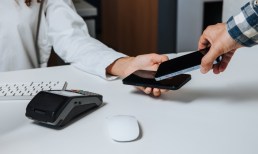How QSRs Are Delivering Ordering Innovation To Digitally Native Customers

In the digital age, quick-service restaurants (QSRs) can use all sorts of technology to improve the customer ordering experience. From in-store kiosks to mobile apps, new innovations are giving diners the chance to ditch the line and order through other channels. And, while customers have a favorable view of many of these technologies, QSR managers tend to have more of an old-school outlook.
That is, over 90 percent of QSR managers see the counter as positive and satisfying experiences per the PYMNTS Restaurant Readiness Index, but only 62.5 percent of managers view, say, in-store kiosks positively. By contrast diners have more enthusiasm for digital technologies: Almost 92 percent of customers have a favorable view of QSR apps per the index. The data hints, then, that there is a “digital divide” between how customers and quick-service managers view these innovations.
Even so, QSR brands such as Taco Bell and Teriyaki Madness are doubling down on creating new ways for customers to place their orders in the digital age. These are some of the technologies that are making their way into the digital playbooks of restaurants across the country — and how both QSR managers and consumers view them:
Almost half — or 53.9 percent — of QSR managers positively view ordering through third-party apps compared to 85.7 percent of customers. Last February, it was reported that Yum! Brands was buying 3 percent ownership stake in food delivery service Grubhub and was teaming up with the company to provide delivery from two of its brands. Grubhub CEO Matt Maloney said in a press release at the time, “The partnership with Yum! … will accelerate the expansion of our delivery network and amplify our diner acquisition efforts, raising consumer awareness of online ordering and driving more volume for all restaurants across our platform.” The tie-up comes as QSRs have increased their appetite for delivery: At the time, it was said that McDonald’s had brought delivery to 5,000 of its approximately 14,000 U.S. stores.
Nearly two thirds — or 62.5 percent — of QSR managers positively view ordering through kiosks in stores compared to 72.3 percent of customers. Taco Bell, in one case, is deploying self-service kiosks in brick-and-mortar restaurants across the country to help provide new ordering experiences to its diners and modernize its restaurants. With the devices, diners can peruse the Mexican-inspired chain’s menu and customize its selections to their tastes or dietary needs. If diners want to make a dish vegetarian, for example, they can swap out beef for beans in the Crunchwrap Supreme. Alternatively, diners can add jalapenos to a bean burrito to bring on the heat. To pay for their meals, diners can use their credit cards or their gift cards at a kiosks or pay at the counter.
About the same share — or 63.7 percent — of QSR managers positively view ordering through a QSRs website compared to 79.2 percent of customers. And QSRs are gaining new tools in their efforts to make websites: Companies like Flipdish aid restaurants of all different sizes by creating online ordering and loyalty programs in house so they don’t have to use portals by third parties. The startup, which is based in Ireland, recently notched €4.8 million in Series A funding to bolster its efforts to provide restaurants with the ability to “fight back” against the aggregators by enabling them to directly accept online orders as well as manage their online presence. Flipdish Co-Founder James McCarthy told PYMNTS in a previous interview, “End users — people ordering — are actually usually very happy to order from the same place over and over again, if you can offer them a really slick, enjoyable user experience. That is the aggregators’ advantage, and we want to help restaurants grab it back.”
And 65 percent of QSR managers positively view ordering through a QSRs mobile app, compared to 91.9 percent of customers. In June, Olo and Punchh teamed up to bring a new mobile ordering app to the fresh Asian fast-casual franchise Teriyaki Madness. Through a digital menu incorporated by Olo, diners could place orders for plates and bowls via mobile app or a web browser in order to ditch the line when they pick up their food. The restaurant served around 70 percent of its orders by delivery or takeout, according to a press release at the time. It was also noted in the release that the company expects to drive shop volume growth of an additional 10 to 15 percent through deployment of the app. At the time of the report, Teriyaki Madness had 45 locations in 18 states and had plans to open six to eight more restaurants last year.
Close to all QSR managers — or 91.1 percent — positively view ordering through a drive-through employee, compared to 78.2 percent of customers. When it comes to Starbucks’ new stores in fiscal year 2018, Starbucks President and Chief Operating Officer Rosalind Brewer said in a call with analysts in November that more than 80 percent of them have drive-throughs. And Brewer said at the time that “this format will be a continued focus into FY 19.” She also said that drive-through, out-the-window and mobile order-and-pay combined grew to more than 50 percent of the way that customers are ordering, which is an increase of more than 10 percentage points in just two years.
From Starbucks to Taco Bell, QSRs are driving innovation in the customer ordering experience with new customers despite the “digital divide” between managers and consumers. In one possible explanation, managers see downsides to digital ordering methods that customers don’t see — like the costs associated with operating them. But, heading into the future, QSR managers may need to weigh the costs of these innovations with the preferences of their customers.


